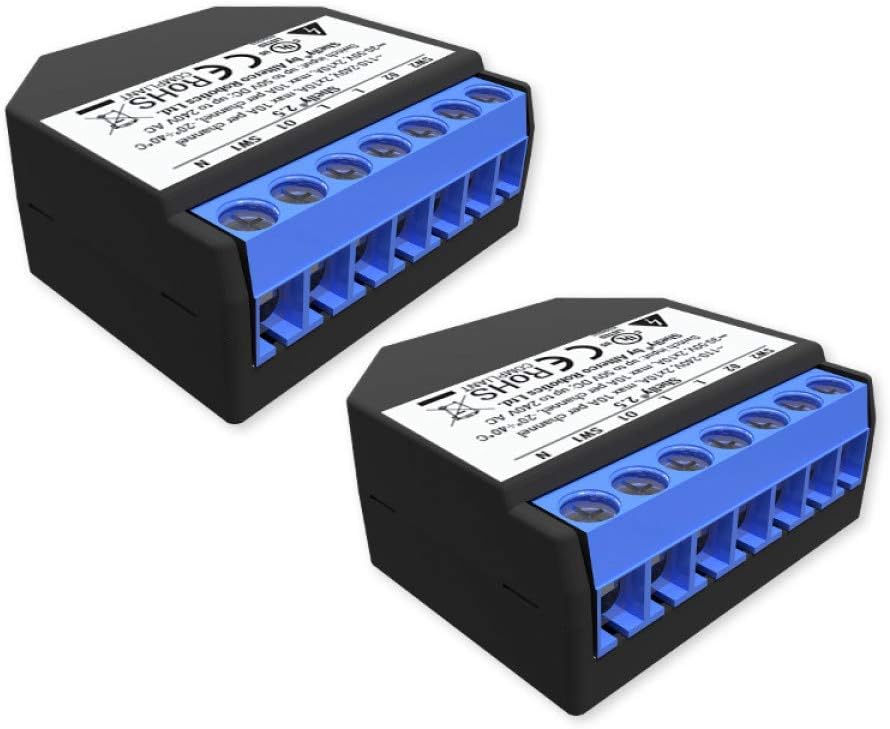About this deal
Inside sealed enclosure sleeps, a familiar to anyone interested in a DIY, microcontroller – ESP8266. There are a couple of dev pins exposed (GND, GPIO00, RST, 3.3V, RX, TX) if tinkering is your thing and a physical button. All this is dry information really as the next chapter will defer you from trying to alter the software. Good online, better offline Shelly 2.5 can be accessed, controlled and monitored remotely from any place where the User has internet connectivity, as long as the device is connected to a Wi-Fi router and the Internet. Status updates: the entire status payload of components is published on
The “Edit device” screen allows you to edit some basic details on the channel like the name, the room and the type of channel itself (light or outlet).It is not a plug and play kind of device. You will need to be handy with electricity to be able to install it. We’re all using Home Assistant to automate our lives, why not use it to automate device integration? Shelly Gen 1 and Shelly Gen 2 ¶ Sonoff DualR3 is new to the market. Upgraded and redesigned not just on the inside (runs ESP32) is much smaller and offers extra functionality over Sonoff Dual R2. Just like Shelly 2.5, both devices aim to automate dual-gang switches or small motors driving shades, motorised rollers etc. The biggest difference between these two devices is the microcontroller that dives them. ESP32 is the bigger, better, stronger, faster brother of ESP8266, but is it enough to compete with Shelly 2.5? Shelly 2.5
Sonoff Dual offers 3 modes (toggle, momentary, edge) only. These cover 90% of the use cases so you shouldn’t have problems connecting the gadget to your light switches. I flashed ESPHome onto all my Shelly 1's, but for some reason, I have issues with my Shelly 2.5 devices... Here's how I flashed ESPHome onto them over-the-air. No wires! My problems with the Shelly 2.5 In my experience, there was one time when the app didn’t detect the new Shelly 2.5 automatically, so I started a new inclusion search and, instead of my home wifi network, I chose the Access Point that the new Shelly 2.5 created. The app eventually found the devices and included it. The Shelly 2.5 model comes with a partially exposed programming/debug header which can be used to flash Tasmota on the device. A USB-to-UART adapter is needed as well as a reliable 3.3V with at least 350 mA drive capability. The following diagram shows the device pinout and power source voltage selection jumper.
devices.esphome.io
sensors/energy/shelly_em.yaml - platform: mqtt name: "EM - Phase A - Energy" value_template: "{{ value|float / 60000 }}" # Wm to kWh unit_of_measurement: 'kWh' expire_after: 86400 device_class: energy state_class: total_increasing qos: 1 state_topic: "shellies/shellyem-
Configuring a device as cover allows you to control things like blinds, curtains, shades, shutters, garage doors, …Home Assistant will display a repair issue for the Shelly device if push updates from this device do not reach the Home Assistant server.
I am not aware of any other device that implements all of those safety features, which makes the Shelly 2.5 one of the safest options to make your devices smarter. If you think your Shelly devices are working correctly and don’t want to change your network/configuration, you can ignore the repair issue. Still, you must know you are giving up the best experience of using first-generation Shelly devices with Home Assistant.
Sonoff DualR3 is slightly bigger but comes with a DIN rail clasp and the terminals are much bigger. It doesn’t offer extra GPIOs (although some dev pads are available for flashing). The unit is driven by ESP32 controls with 2 relays rated also 10A each. Unlike Shelly 2.5, Sonoff DualR3 suggest a 15A total current limit for both relays. The inductive current rating is 1A which is enough to drive a small motor.
 Great Deal
Great Deal 